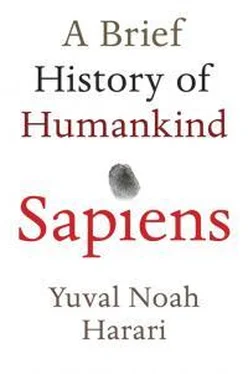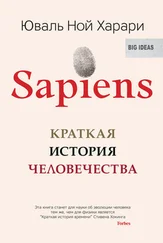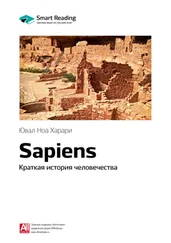Most people claim that their social hierarchy is natural and just, while those of other societies are based on false and ridiculous criteria. Modern Westerners are taught to scoff at the idea of racial hierarchy. They are shocked by laws prohibiting blacks to live in white neighbourhoods, or to study in white schools, or to be treated in white hospitals. But the hierarchy of rich and poor – which mandates that rich people live in separate and more luxurious neighbourhoods, study in separate and more prestigious schools, and receive medical treatment in separate and better-equipped facilities – seems perfectly sensible to many Americans and Europeans. Yet it’s a proven fact that most rich people are rich for the simple reason that they were born into a rich family, while most poor people will remain poor throughout their lives simply because they were born into a poor family.
Unfortunately, complex human societies seem to require imagined hierarchies and unjust discrimination. Of course not all hierarchies are morally identical, and some societies suffered from more extreme types of discrimination than others, yet scholars know of no large society that has been able to dispense with discrimination altogether. Time and again people have created order in their societies by classifying the population into imagined categories, such as superiors, commoners and slaves; whites and blacks; patricians and plebeians; Brahmins and Shudras; or rich and poor. These categories have regulated relations between millions of humans by making some people legally, politically or socially superior to others.
Hierarchies serve an important function. They enable complete strangers to know how to treat one another without wasting the time and energy needed to become personally acquainted. In George Bernard Shaw’s Pygmalion , Henry Higgins doesn’t need to establish an intimate acquaintance with Eliza Doolittle in order to understand how he should relate to her. Just hearing her talk tells him that she is a member of the underclass with whom he can do as he wishes – for example, using her as a pawn in his bet to pass off a flower girl as a duchess. A modern Eliza working at a florist’s needs to know how much effort to put into selling roses and gladioli to the dozens of people who enter the shop each day. She can’t make a detailed enquiry into the tastes and wallets of each individual. Instead, she uses social cues – the way the person is dressed, his or her age, and if she’s not politically correct his skin colour. That is how she immediately distinguishes between the accounting-firm partner who’s likely to place a large order for expensive roses, and a messenger boy who can only afford a bunch of daisies.
Of course, differences in natural abilities also play a role in the formation of social distinctions. But such diversities of aptitudes and character are usually mediated through imagined hierarchies. This happens in two important ways. First and foremost, most abilities have to be nurtured and developed. Even if somebody is born with a particular talent, that talent will usually remain latent if it is not fostered, honed and exercised. Not all people get the same chance to cultivate and refine their abilities. Whether or not they have such an opportunity will usually depend on their place within their society’s imagined hierarchy. Harry Potter is a good example. Removed from his distinguished wizard family and brought up by ignorant muggles, he arrives at Hogwarts without any experience in magic. It takes him seven books to gain a firm command of his powers and knowledge of his unique abilities.
Second, even if people belonging to different classes develop exactly the same abilities, they are unlikely to enjoy equal success because they will have to play the game by different rules. If, in British-ruled India, an Untouchable, a Brahmin, a Catholic Irishman and a Protestant Englishman had somehow developed exactly the same business acumen, they still would not have had the same chance of becoming rich. The economic game was rigged by legal restrictions and unofficial glass ceilings.
The Vicious Circle
All societies are based on imagined hierarchies, but not necessarily on the same hierarchies. What accounts for the differences? Why did traditional Indian society classify people according to caste, Ottoman society according to religion, and American society according to race? In most cases the hierarchy originated as the result of a set of accidental historical circumstances and was then perpetuated and refined over many generations as different groups developed vested interests in it.
For instance, many scholars surmise that the Hindu caste system took shape when Indo-Aryan people invaded the Indian subcontinent about 3,000 years ago, subjugating the local population. The invaders established a stratified society, in which they – of course – occupied the leading positions (priests and warriors), leaving the natives to live as servants and slaves. The invaders, who were few in number, feared losing their privileged status and unique identity. To forestall this danger, they divided the population into castes, each of which was required to pursue a specific occupation or perform a specific role in society. Each had different legal status, privileges and duties. Mixing of castes – social interaction, marriage, even the sharing of meals – was prohibited. And the distinctions were not just legal – they became an inherent part of religious mythology and practice.
The rulers argued that the caste system reflected an eternal cosmic reality rather than a chance historical development. Concepts of purity and impurity were essential elements in Hindu religion, and they were harnessed to buttress the social pyramid. Pious Hindus were taught that contact with members of a different caste could pollute not only them personally, but society as a whole, and should therefore be abhorred. Such ideas are hardly unique to Hindus. Throughout history, and in almost all societies, concepts of pollution and purity have played a leading role in enforcing social and political divisions and have been exploited by numerous ruling classes to maintain their privileges. The fear of pollution is not a complete fabrication of priests and princes, however. It probably has its roots in biological survival mechanisms that make humans feel an instinctive revulsion towards potential disease carriers, such as sick persons and dead bodies. If you want to keep any human group isolated – women, Jews, Roma, gays, blacks – the best way to do it is convince everyone that these people are a source of pollution.
The Hindu caste system and its attendant laws of purity became deeply embedded in Indian culture. Long after the Indo-Aryan invasion was forgotten, Indians continued to believe in the caste system and to abhor the pollution caused by caste mixing. Castes were not immune to change. In fact, as time went by, large castes were divided into sub-castes. Eventually the original four castes turned into 3,000 different groupings called jati (literally ‘birth’). But this proliferation of castes did not change the basic principle of the system, according to which every person is born into a particular rank, and any infringement of its rules pollutes the person and society as a whole. A persons jati determines her profession, the food she can eat, her place of residence and her eligible marriage partners. Usually a person can marry only within his or her caste, and the resulting children inherit that status.
Whenever a new profession developed or a new group of people appeared on the scene, they had to be recognised as a caste in order to receive a legitimate place within Hindu society. Groups that failed to win recognition as a caste were, literally, outcasts – in this stratified society, they did not even occupy the lowest rung. They became known as Untouchables. They had to live apart from all other people and scrape together a living in humiliating and disgusting ways, such as sifting through garbage dumps for scrap material. Even members of the lowest caste avoided mingling with them, eating with them, touching them and certainly marrying them. In modern India, matters of marriage and work are still heavily influenced by the caste system, despite all attempts by the democratic government of India to break down such distinctions and convince Hindus that there is nothing polluting in caste mixing. 3
Читать дальше



![Юваль Ной Харари - Sapiens. Краткая история человечества [litres]](/books/34310/yuval-noj-harari-sapiens-kratkaya-istoriya-cheloveche-thumb.webp)





![Юваль Ной Харари - 21 урок для XXI века [Версия с комментированными отличиями перевода]](/books/412481/yuval-noj-harari-21-urok-dlya-xxi-veka-versiya-s-ko-thumb.webp)


